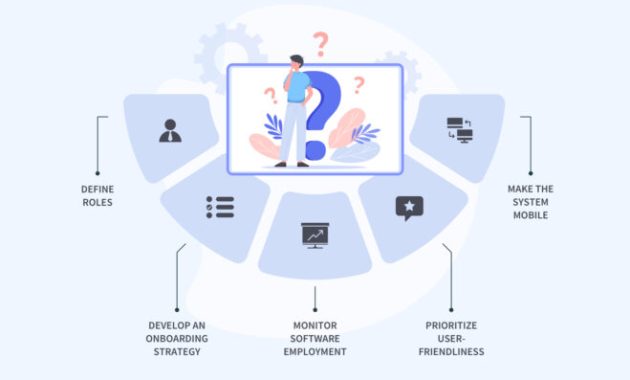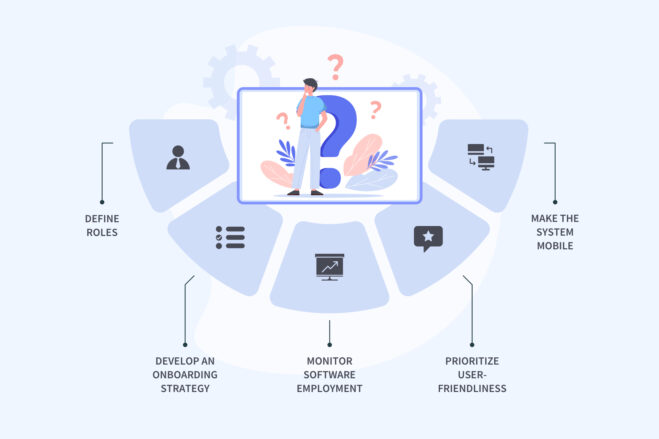
Discover Power in Self-service Business Intelligence Software: A Deep Dive
In today’s data-driven world, organizations are drowning in information. The challenge lies not in acquiring data, but in extracting meaningful insights to drive strategic decisions. This is where self-service business intelligence (BI) software steps in, empowering users to analyze data independently and uncover hidden opportunities. This article delves into the transformative power of self-service business intelligence software, exploring its benefits, features, and the impact it can have on your business.
The rise of self-service BI software marks a paradigm shift. Traditionally, data analysis was the domain of specialized IT teams and data scientists. Reports were generated through complex processes, often resulting in delays and a lack of agility. Self-service BI software democratizes data access, putting the analytical tools directly into the hands of business users. This enables faster decision-making, improved collaboration, and a more data-literate workforce.
Democratizing Data: The Core of Self-Service BI
Self-service business intelligence software empowers users to access, analyze, and visualize data without relying on IT specialists. This democratization of data leads to significant advantages:
- Faster Decision-Making: Users can generate reports and answer questions in real-time, accelerating the decision-making process.
- Improved Agility: Businesses can quickly adapt to market changes and seize new opportunities.
- Increased Data Literacy: Employees become more comfortable working with data, leading to better insights and informed decisions.
- Reduced IT Bottlenecks: IT teams are freed from routine reporting tasks, allowing them to focus on more strategic initiatives.
The core principle of self-service BI is accessibility. Intuitive interfaces, drag-and-drop functionality, and pre-built templates make it easy for users with varying levels of technical expertise to explore data. This accessibility fosters a data-driven culture, where insights are readily available and inform every aspect of the business.
Key Features of Self-Service Business Intelligence Software
Self-service BI software offers a suite of features designed to empower users with data analysis capabilities. Some essential features include:
- Data Integration: The ability to connect to various data sources, including databases, spreadsheets, cloud applications, and more.
- Data Preparation: Tools for cleaning, transforming, and preparing data for analysis. This includes data cleansing, data wrangling, and data modeling.
- Data Visualization: A wide range of visualization options, such as charts, graphs, and dashboards, to communicate insights effectively.
- Interactive Dashboards: Customizable dashboards that allow users to monitor key performance indicators (KPIs) and explore data in real-time.
- Ad-hoc Reporting: The ability to create custom reports based on specific needs and questions.
- Collaboration and Sharing: Features that enable users to share insights, collaborate on reports, and work together on data analysis projects.
- Mobile Access: Access to data and dashboards on mobile devices, allowing users to stay informed on the go.
These features, combined, provide a comprehensive platform for data analysis, enabling users to uncover valuable insights and drive better business outcomes. Choosing the right self-service business intelligence software requires careful consideration of these features and how they align with your specific needs.
The Benefits of Implementing Self-Service BI
The advantages of adopting self-service business intelligence software extend across various departments and levels of an organization. Here are some key benefits:
- Improved Decision-Making: Data-driven insights lead to more informed and effective decisions, reducing guesswork and increasing the likelihood of success.
- Enhanced Operational Efficiency: By identifying bottlenecks and inefficiencies, businesses can streamline processes and improve overall performance.
- Increased Revenue: Data analysis can reveal opportunities for revenue growth, such as new product development, improved customer targeting, and optimized pricing strategies.
- Cost Reduction: By identifying areas where costs can be reduced, self-service BI can help businesses improve their bottom line.
- Better Customer Understanding: Analyzing customer data provides valuable insights into customer behavior, preferences, and needs, allowing businesses to improve customer satisfaction and loyalty.
- Competitive Advantage: By leveraging data to make better decisions, businesses can gain a competitive edge in their industry.
These benefits demonstrate the significant impact that self-service BI software can have on an organization’s performance. By empowering users with data analysis capabilities, businesses can unlock hidden potential and achieve their strategic goals.
Choosing the Right Self-Service BI Software
Selecting the appropriate self-service business intelligence software is crucial for maximizing its benefits. Consider the following factors when evaluating different solutions:
- Ease of Use: The software should have an intuitive interface and be easy to learn and use for users with varying levels of technical expertise.
- Data Integration Capabilities: Ensure the software can connect to all your relevant data sources, including databases, spreadsheets, and cloud applications.
- Data Visualization Options: Look for a wide range of visualization options to effectively communicate insights.
- Reporting and Dashboarding Features: The software should offer robust reporting and dashboarding capabilities to monitor KPIs and track progress.
- Scalability: Choose a solution that can scale to accommodate your growing data volumes and user base.
- Security and Governance: Ensure the software has robust security features to protect your data and comply with relevant regulations.
- Cost: Consider the total cost of ownership, including software licensing, implementation, and ongoing maintenance.
- Support and Training: Look for a vendor that provides comprehensive support and training to help you get the most out of the software.
By carefully evaluating these factors, you can choose the self-service BI software that best meets your organization’s needs and helps you achieve your business goals.
Real-World Examples: Self-Service BI in Action
The impact of self-service business intelligence software is evident in various industries and business functions. Here are some real-world examples:
- Retail: Retailers use self-service BI to analyze sales data, track inventory levels, identify customer trends, and optimize pricing strategies.
- Healthcare: Healthcare providers use self-service BI to analyze patient data, monitor performance metrics, improve patient care, and reduce costs.
- Finance: Financial institutions use self-service BI to analyze financial data, manage risk, detect fraud, and improve investment decisions.
- Marketing: Marketers use self-service BI to analyze campaign performance, track website traffic, identify customer segments, and optimize marketing spend.
- Manufacturing: Manufacturers use self-service BI to analyze production data, track efficiency, identify bottlenecks, and improve quality control.
These examples demonstrate the versatility and applicability of self-service BI software across various industries and business functions. By leveraging data-driven insights, organizations can improve their performance, gain a competitive advantage, and achieve their strategic goals. Successful implementation often involves a pilot project, allowing businesses to test the software’s capabilities and refine their approach before a full-scale rollout. Ongoing training and support are also crucial to ensure user adoption and maximize the value of the software.
The Future of Self-Service Business Intelligence
The future of self-service business intelligence software is bright. With the increasing volume and complexity of data, the demand for powerful and accessible analytical tools will continue to grow. Key trends shaping the future include:
- Artificial Intelligence (AI) and Machine Learning (ML): AI and ML are being integrated into self-service BI software to automate tasks, provide predictive analytics, and generate more advanced insights.
- Cloud-Based Solutions: Cloud-based self-service BI solutions are becoming increasingly popular due to their scalability, flexibility, and cost-effectiveness.
- Mobile BI: The ability to access data and dashboards on mobile devices will continue to grow in importance.
- Data Governance and Security: As data privacy and security concerns become more prevalent, self-service BI vendors will need to prioritize robust data governance and security features.
- Integration with Other Technologies: Self-service BI will continue to integrate with other technologies, such as data warehousing, data lakes, and CRM systems, to provide a more comprehensive view of the business.
These trends suggest that self-service BI software will become even more powerful, accessible, and integrated in the years to come, further empowering users to extract valuable insights from data and drive better business outcomes.
Self-service business intelligence software is a powerful tool that can transform the way organizations analyze data and make decisions. By democratizing data access, empowering users, and providing a comprehensive suite of features, self-service BI enables businesses to unlock hidden opportunities, improve performance, and gain a competitive advantage. As the volume and complexity of data continue to grow, the importance of self-service BI will only increase, making it an essential tool for businesses of all sizes and across all industries. The journey towards a data-driven future begins with embracing the power of self-service business intelligence software. [See also: Related Article Titles]

